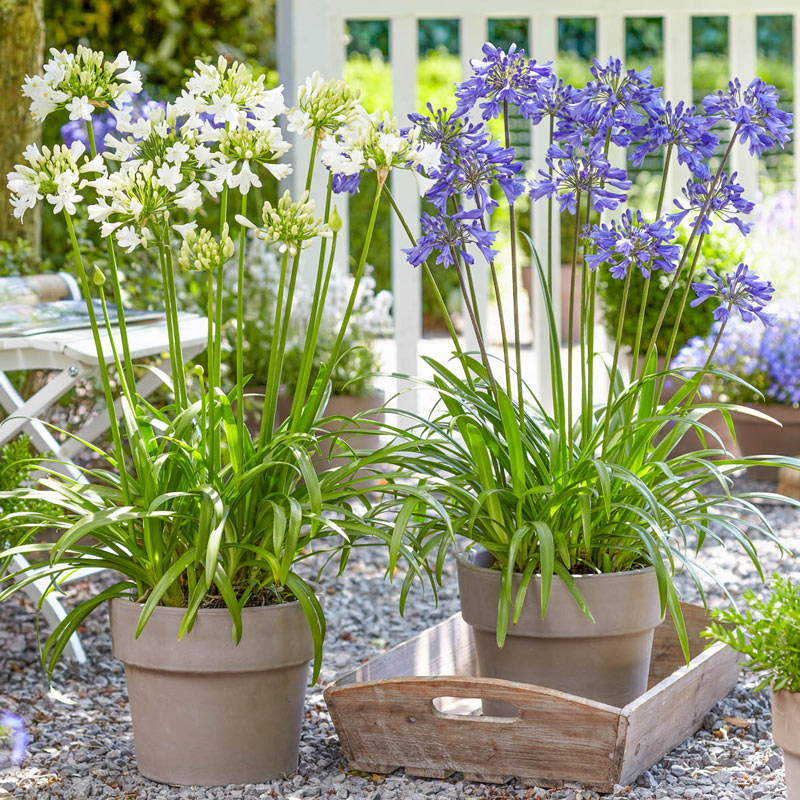Grasping the Art of Agapanthus Treatment: Necessary Steps for Healthy And Balanced Development and Lively Blooms
In the realm of gardening, the cultivation of agapanthus stands as a gratifying endeavor for those that seek to support these classy blooming plants. With their striking blooms and stylish vegetation, agapanthus has actually captured the attention of garden enthusiasts worldwide. Nevertheless, achieving optimum development and vibrant blossoms calls for a nuanced strategy that encompasses numerous crucial steps. From picking the right range to understanding trimming techniques, the journey towards growing prospering agapanthus plants is diverse and holds the crucial to opening the complete capacity of these botanical treasures.

Choosing the Right Agapanthus Selection

When choosing the best Agapanthus selection for your yard, think about aspects such as environment viability, blossom color, and growth habit. Agapanthus, commonly understood as Lily of the Nile or African lily, is available in a selection of shades varying from shades of blue and purple to white. Select a flower shade that complements your existing yard scheme to produce a harmonious landscape. Additionally, think about the environment in your area to make sure the Agapanthus variety you select can flourish in your certain problems. Some selections are a lot more forgiving of chilly temperature levels, while others favor warmer environments. Recognizing the growth practice of various Agapanthus ranges is vital for appropriate positioning within your garden. Some selections have a clumping growth behavior, ideal for containers or boundaries, while others have a more spreading nature, ideal for ground cover or mass plantings. By carefully reviewing these elements, you can pick the perfect Agapanthus selection to enhance the appeal of your garden.
Ideal Planting Problems
Taking into consideration the ideal ecological needs is crucial for successful Agapanthus growing. Agapanthus plants are sensitive to cold temperatures and need to be shielded from frost during wintertime months.
To ensure healthy and balanced development and vibrant blossoms, plant Agapanthus light bulbs at a depth of regarding 2-4 inches and space them 8-12 inches apart. Mulching around the base of the plants aids preserve wetness and reduces weed growth.
Watering and Feeding Tips
Keeping correct wetness degrees and giving crucial nutrients are vital aspects in the treatment program for Agapanthus plants. When it concerns sprinkling Agapanthus, it is crucial to strike a balance. These plants favor regularly moist soil however are vulnerable to root rot if overwatered. Throughout the expanding season, water deeply as soon as a week, making sure the dirt is well-draining to stop waterlogging. In hotter environments or throughout durations of dry spell, more frequent watering may be required to maintain the dirt evenly damp. Nevertheless, reduce watering in the winter season to avoid water logged problems.
Feeding Agapanthus is important for promoting healthy development and prolific a knockout post blossoms. Use a well balanced fertilizer, such as a 10-10-10 formula, in the early spring as brand-new growth emerges. By adhering to these watering and feeding suggestions, you can guarantee your Agapanthus plants thrive and produce vibrant, resilient blooms.
Pruning Methods for Agapanthus
Pruning Agapanthus plants at the suitable times and with appropriate techniques is important for preserving their health and wellness and advertising optimum growth and blooming. The excellent time to trim Agapanthus is in late winter months or very early spring prior to brand-new growth emerges.
For flowered stems, wait up until the blossoms have withered and afterwards trim them back to the base. This not only cleans the plant's appearance yet likewise urges the advancement of new flower buds. Deadheading invested flowers can also redirect the plant's energy into generating even more flowers as opposed to setting seeds. Nonetheless, if you wish to accumulate seeds for proliferation, leave some flowers to mature and dry on the plant.
Bear in mind to make use of clean, sharp devices to make specific cuts and minimize the threat of visit the website introducing diseases. Agapanthus. Regular pruning will aid maintain your Agapanthus looking neat and healthy and balanced while making sure a bountiful screen of attractive blooms
Dealing With Common Parasites and Diseases
After making sure proper trimming methods for Agapanthus, it is necessary to address common parasites and diseases that can influence the wellness and vigor of these plants. Agapanthus plants are normally hardy yet can still drop victim to particular issues. One common pest that impacts Agapanthus is the Agapanthus gall midge. This tiny, orange fly lays its eggs in the foliage, leading to distorted development and blossom buds that fall short to open. To combat this bug, prune and destroy any damaged plant parts and take into consideration making use of insecticidal soap.
In addition, Agapanthus plants can suffer from root rot if they are planted in improperly draining dirt. By being alert and taking timely action versus insects and illness, you can assist your Agapanthus plants thrive and produce lively blooms. Agapanthus.

Final Thought
Finally, grasping the art of agapanthus care involves selecting the best range, offering ideal planting problems, correct watering and fertilizing, ideal trimming methods, and addressing typical pests and illness. By adhering to these essential actions, you can guarantee healthy growth and dynamic flowers for your agapanthus plants. Remember to on a regular basis keep track of and maintain your plants to advertise their overall wellness and longevity.
To ensure healthy growth and vivid flowers, plant Agapanthus light bulbs at a depth of about 2-4 inches and room them 8-12 inches apart. By complying with these watering and fertilizing visit their website ideas, you can ensure your Agapanthus plants thrive and generate lively, durable blossoms.
One common pest that influences Agapanthus is the Agapanthus gall midget. In addition, Agapanthus plants can suffer from origin rot if they are planted in badly draining pipes soil. By complying with these crucial actions, you can make sure healthy development and vivid blooms for your agapanthus plants.